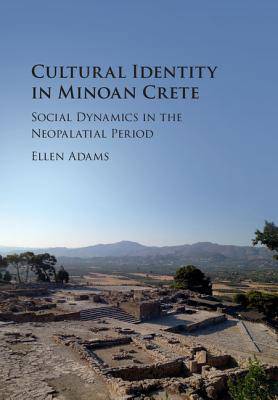
- Afhalen na 1 uur in een winkel met voorraad
- Gratis thuislevering in België vanaf € 30
- Ruim aanbod met 7 miljoen producten
- Afhalen na 1 uur in een winkel met voorraad
- Gratis thuislevering in België vanaf € 30
- Ruim aanbod met 7 miljoen producten
Zoeken
Cultural Identity in Minoan Crete
Social Dynamics in the Neopalatial Period
Ellen Adams
Hardcover | Engels
€ 206,45
+ 412 punten
Omschrijving
Neopalatial Crete - the 'Golden Age' of the Minoan Civilization - possessed palaces, exquisite artefacts, and iconography with pre-eminent females. While lacking in fortifications, ritual symbolism cloaked the island, an elaborate bureaucracy logged transactions, and massive storage areas enabled the redistribution of goods. We cannot read the Linear A script, but the libation formulae suggest an island-wide koine. Within this cultural identity, there is considerable variation in how the Minoan elites organized themselves and others on an intra-site and regional basis. This book explores and celebrates this rich, diverse and dynamic culture through analyses of important sites, as well as Minoan administration, writing, economy and ritual. Key themes include the role of Knossos in wider Minoan culture and politics, the variable modes of centralization and power relations detectable across the island, and the role of ritual and cult in defining and articulating elite control.
Specificaties
Betrokkenen
- Auteur(s):
- Uitgeverij:
Inhoud
- Aantal bladzijden:
- 360
- Taal:
- Engels
Eigenschappen
- Productcode (EAN):
- 9781107197527
- Verschijningsdatum:
- 16/10/2017
- Uitvoering:
- Hardcover
- Formaat:
- Genaaid
- Afmetingen:
- 191 mm x 268 mm
- Gewicht:
- 385 g

Alleen bij Standaard Boekhandel
+ 412 punten op je klantenkaart van Standaard Boekhandel
Beoordelingen
We publiceren alleen reviews die voldoen aan de voorwaarden voor reviews. Bekijk onze voorwaarden voor reviews.








